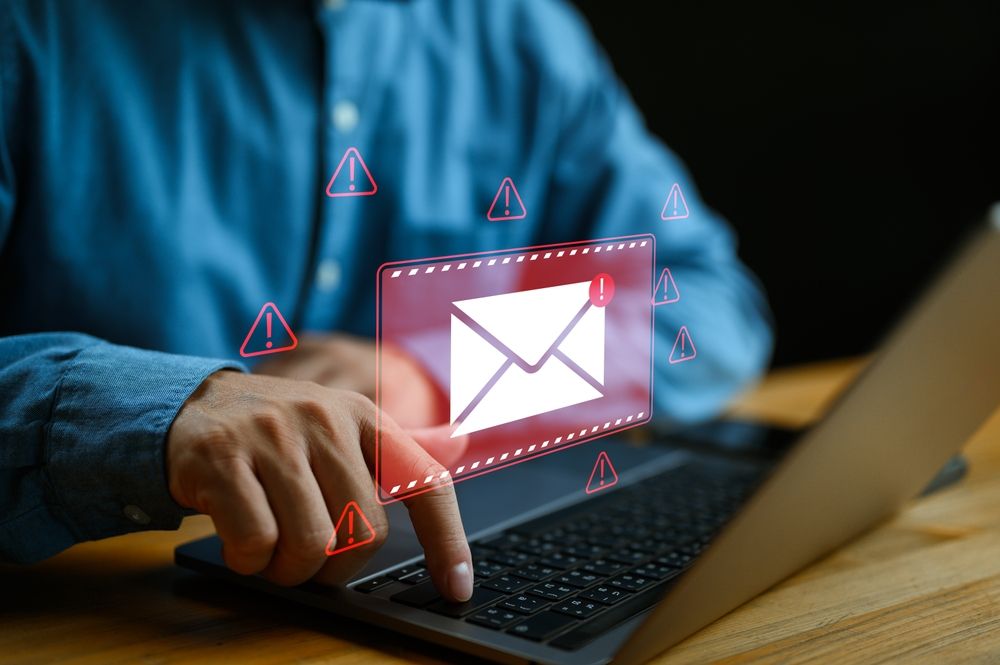
Why One-Click Email Attacks Are Your Biggest Liability
It only takes a single click to trigger a devastating cybersecurity incident. One-click email attacks, where a user clicks a malicious link or opens a harmful attachment, remain one of the most common and damaging cybersecurity threats. These attacks are simple, effective, and alarmingly easy to fall for, especially when employees are unprepared to spot them.
What Is a One-Click Attack?
One-click attacks often start with phishing emails. These emails are designed to trick users into clicking a link or downloading a file that installs malware or leads to credential theft. The emails can look like messages from trusted sources, including banks, colleagues, or well-known companies.
Once the user clicks, the damage is done. Cybercriminals may gain access to sensitive information, install ransomware, or hijack internal systems without the user realizing what happened until it is too late.
Why Are One-Click Attacks Effective?
One-click attacks work because they target people, not just systems. Even tech-savvy users can be fooled when they are rushed, distracted, or under pressure. Phishing messages often use urgent language, fake alerts, or emotional appeals to prompt quick action.
The problem is only getting worse. In 2024, phishing click rates tripled compared to the previous year. This sharp rise shows that traditional awareness training isn’t enough. Even tech-savvy users are falling for more advanced and convincing phishing schemes.
Many businesses also lack key protections such as email filtering, multi-factor authentication, or user training. Without these defenses in place, a single click from one employee can result in a major breach.
The Real Cost of One Mistake
A single click can lead to severe consequences. According to the 2024 IBM Cost of a Data Breach Report, the average global cost of a breach is $4.9 million. Even for smaller organizations, the financial and reputational damage can be devastating.
Ransomware is a frequent outcome of one-click attacks. It can lock down systems, disrupt operations, and demand expensive payouts. In some cases, companies also face legal consequences or fines if sensitive data is exposed.
How to Reduce the Risk
You do not need a massive IT budget to protect your team. A few practical steps can go a long way in defending against one-click attacks:
- Train your staff. Regular security awareness training helps employees recognize phishing attempts and know how to respond.
- Use email filters. Advanced filtering tools can block many phishing emails before they reach inboxes.
- Implement multi-factor authentication. Even if login credentials are stolen, MFA can prevent unauthorized access.
- Keep software up to date. Ensure all devices have current security patches, antivirus software, and firewalls in place.
- Run phishing simulations. Periodic testing helps reinforce safe behaviors and identify training gaps.
Conclusion: Staff Training is Key
One-click email attacks are low-effort for cybercriminals but high-impact for businesses. They exploit your biggest vulnerability—human error—using tools that are readily available and constantly evolving. But by building a culture of security awareness, using smart tools, and staying proactive, your organization can significantly lower the risk. Cybersecurity is not just about technology. It starts with people, and the right training can be your strongest defense.
Don’t wait for a single click to cost your organization everything. At LeadingIT, we help businesses like yours stay ahead of phishing threats with a proactive, people-first cybersecurity strategy, because real protection starts with education, tools, and training that actually work. Ready to reduce your risk and protect what matters most? Contact us today for a free IT risk assessment.



